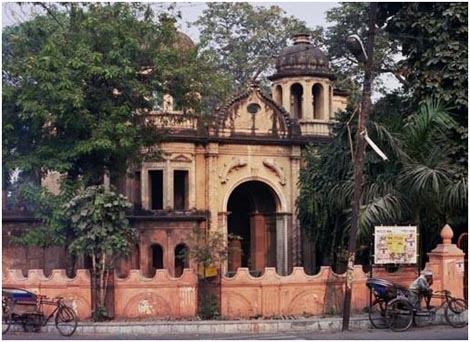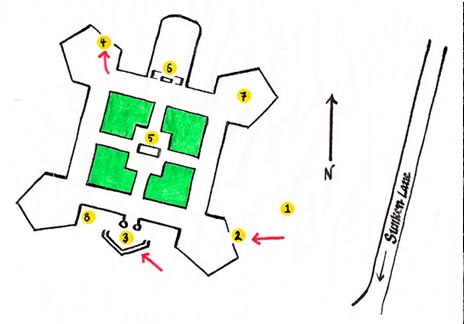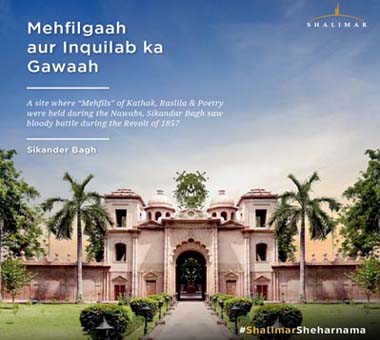
Sikandar Bagh - A Juxtaposition of Culture & Revolution
Nawab Wajid Ali Shah, the last Nawab of Awadh, was a renowned patron of art & culture and an accomplished Shayar, Dancer, Musician, Author & painter himself. He is widely credited with the revival of Kathak as a major form of classical Indian dance. He was also a renowned patron of architecture and one of his architectural feats is the construction of the Sikandar Bagh(Known as Secundra Bagh by the British).
The Sikandar Bagh is a Villa and Garden enclosed by a fortified wall, with loopholes, gateway and corner bastions, approx. 150 yards square, c. 4.5 acres (1.8 ha). It was first laid down as a royal garden in 1800 AD by Nawab Saadat Ali Khan and later improved with the addition of a villa and other fortifications by Nawab Wajid Ali Shah. It was stormed in 1857 by the British during the Indian Rebellion and witnessed within its walls the slaughter of all 2,200 sepoy mutineers who had made it a stronghold during their Siege of Lucknow. The site now houses the National Botanical Research Institute of India.
Constructed as the Royal Summer residence, the garden houses a small pavilion in the middle, which is renowned to have been the scene of countless performances of the Ras-Lilas - Dance routines depicting Lord Krishna’s life, Kathak dances, music and poetic 'mehfils' and other cultural activities for which the last Nawab is known to have had a great appreciation. Historians and citizens alike often consider this fondness to be a bit exaggerated, however, it served a greater purpose in ensuring a harmonious kingdom without a doubt.

Significance in the Siege of Lucknow
A heavy altercation ensued between the British and Rebel forces. The British cavalry was jammed due to the heavy onslaught. However, the Sappers & Miners managed to demolish the earth banks and thus freed the 6 Heavy Artillery guns to come to the fore and start bombarding the edifice. Due to exceptional bravery shown by soldiers of the 4th Punjab Infantry, the main gate, which was in the process of being closed by the Revolutionaries, could not be closed and the British forces stormed the Garden.
Those killed or wounded during the assault included 9 officers and 90 men of the 93rd Highlanders, and 3 officers and 69 men from the 4th Punjabi Infantry for the British, while every one of the nearly 2200 Rebels were massacred during the storming. After the fighting, the British and loyal native Punjab Infantry dead were buried in a deep trench. Later elephants were used to drag the corpses of the mutineers out of the Sikandar Bagh, where they were slightly covered over in a ditch which they themselves had recently dug outside the north wall in order to strengthen the defences.ś

In early 1858 Felice Beato photographed the Sikandar Bagh, showing skeletal remains strewn across the grounds of the interior. These were apparently disinterred or rearranged to heighten the photo's dramatic impact.
Despite the centuries that have passed and all that has gone by, the magnificent facade of the Sikandar bagh bears testament to a rather unusual juxtaposition - that of art & culture against the bloody revolution of 1857, and reminds the denizens of Lucknow the humongous sacrifices made for Lucknow to be what it is today...
